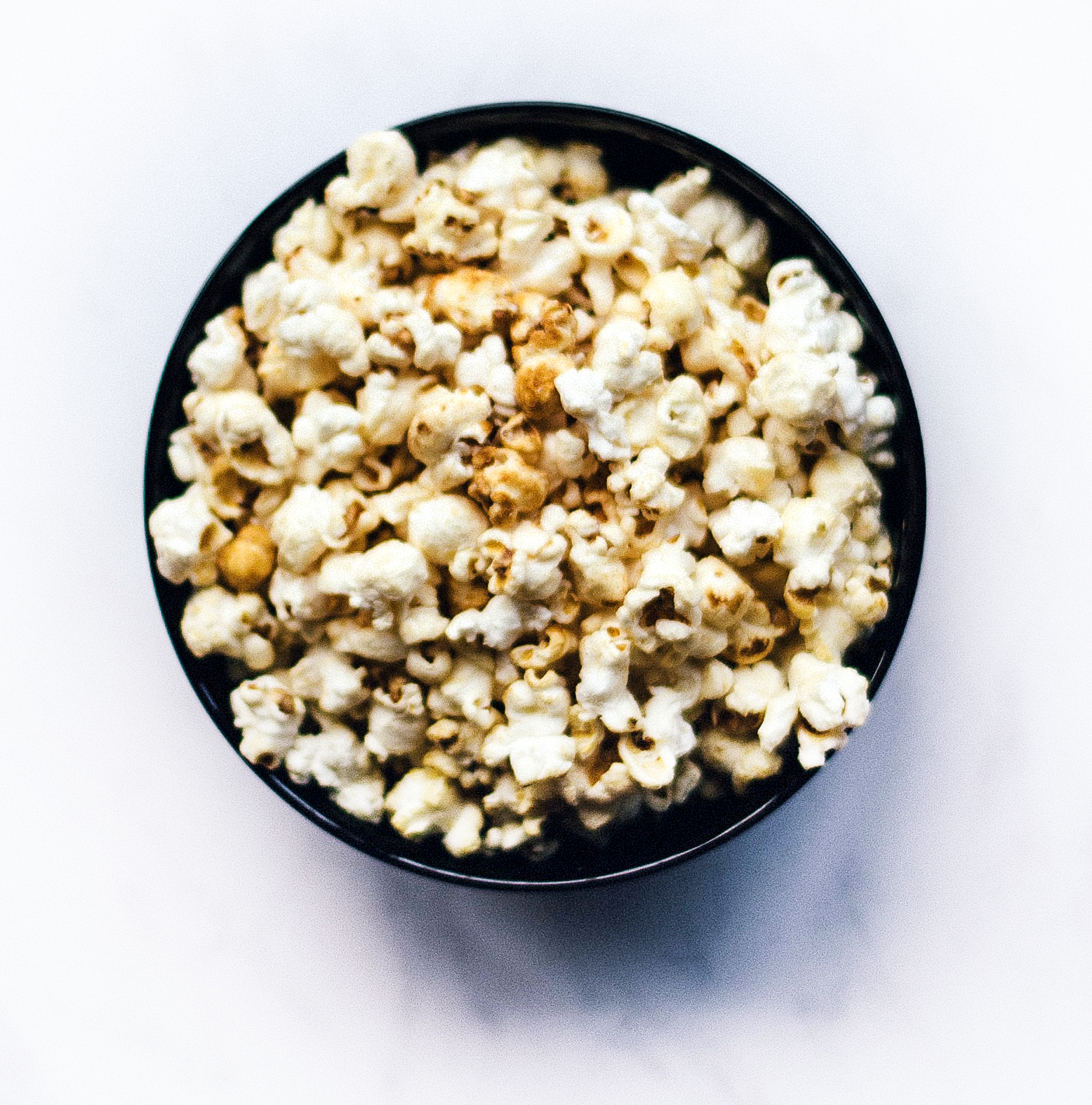Texture Analysis SolutionsPopcorn crunchiness texture cooking process comparison
- Objective results comparison between two end-consumer popcorn cooking methods
- Food processor can recommend cooking instructions to give confidence in the final serving’s texture
- Bulk analysis fixtures replicate biting through a handful of popcorn
- Peak biting force indicates the resistance to chewing, correlating with crunchiness mouthfeel
Situation
Two hot air samples were prepared in commercially available home-cook popcorn poppers. The two microwaveable samples were heated in a microwave oven for three minutes. All samples were allowed to cool to room temperature before being analyzed. After cooling, 5 g samples were placed in the Kramer CS-1 Standard Shear Compression Cell for testing.
Method

For each test replication, 5 g samples were prepared. The testing was done using a Texture Analyzer fitted with a 3000 lbs load cell. This large load cell had to be used due to the high forces encountered during the tests. Speed for this test was set to 7 inches per minute to a deformation distance of 3.5 inches. This distance was selected so the upper fixture blades on the CS-1 Shear Cell would shear completely through enough of the product to be representative.
| Sample\Profile | Batch 1 Hot air |
Batch 2 Hot air |
Batch 3 Microwave |
Batch 4 Microwave |
|---|---|---|---|---|
| 1 | 1909 | 1860 | 1021 | 1546 |
| 2 | 1848 | 2063 | 1214 | 1259 |
| 3 | 1919 | 1965 | 1085 | 1256 |
| 4 | 1985 | 1968 | 1085 | 1256 |
| 5 | 2028 | 1837 | 1122 | 1175 |
| Average | 1938 | 1939 | 1097 | 1225 |
Results and benefits
The results above show that there is a significant difference between the hot air and the microwave products. The hot air produced a firmer product, almost twice the peak force measured, while the microwave products were softer. The consumer would perceive this a crunchiness as the characteristic of how the popcorn fractures. This information could be used as a valuable tool by processors to help control some of the different production parameters to ensure that a consistent and desirable product is being made, and to be confident in home-cooking recommendation. Being able to measure and control the texture of a product is a very important quality aspect, especially when similar products are intended to replicate each other, as in this case.
FDA 21 CFR Part 11 software
VectorPro software not only handles the texture calculations which food scientists need in order to quantify the physical properties of the test sample, but also meets 21 CFR Part 11 regulations from the US Food and Drug Administration (FDA). This component of the regulations establishes the requirements for the use of electronic records and signatures. The implementation of compliant security, traceability, event logging, test versioning and other features is valuable to the food producer.


